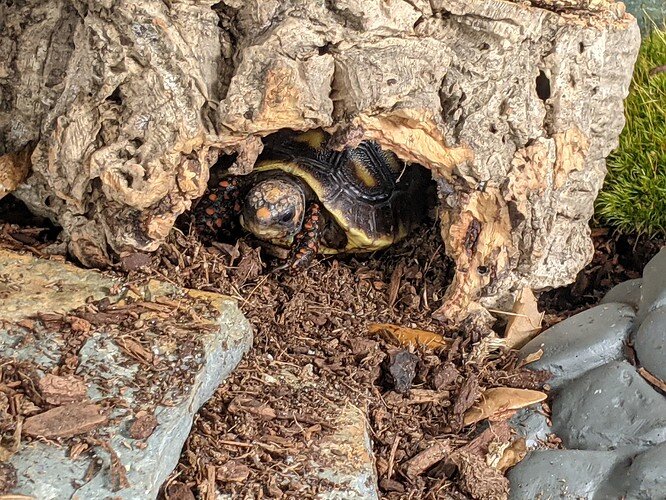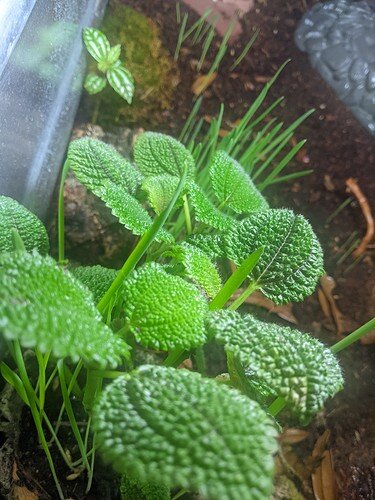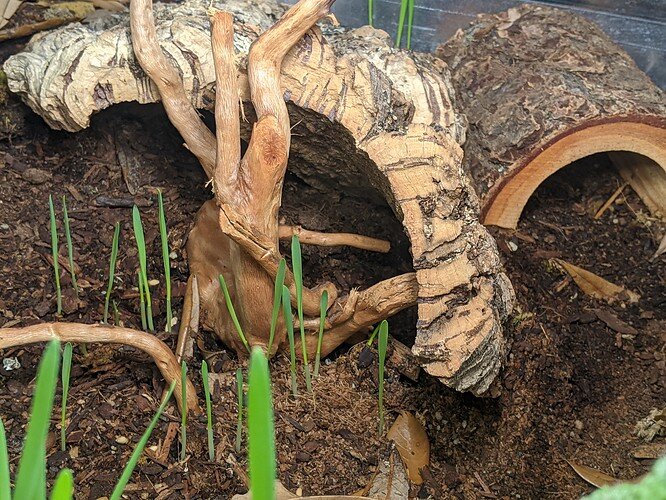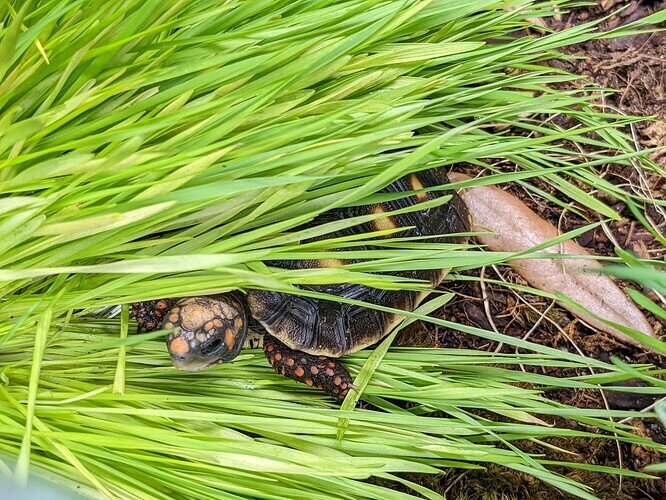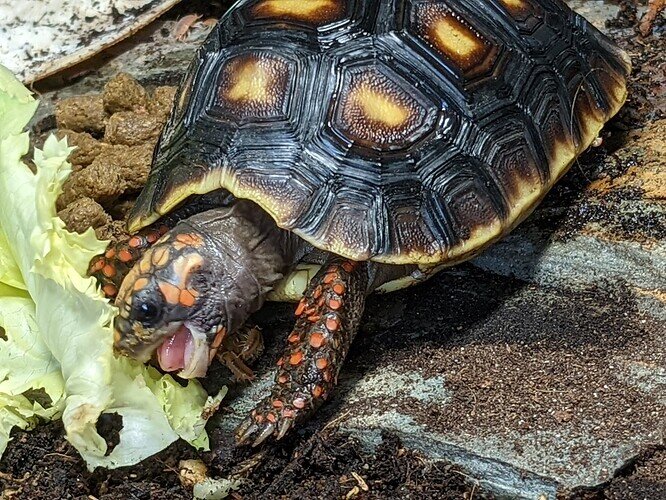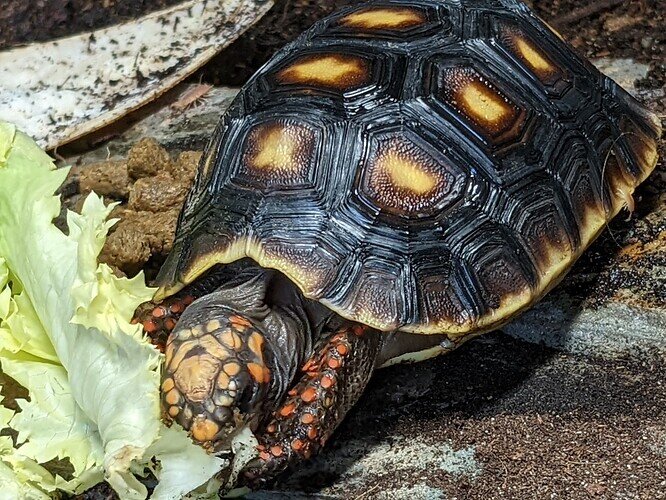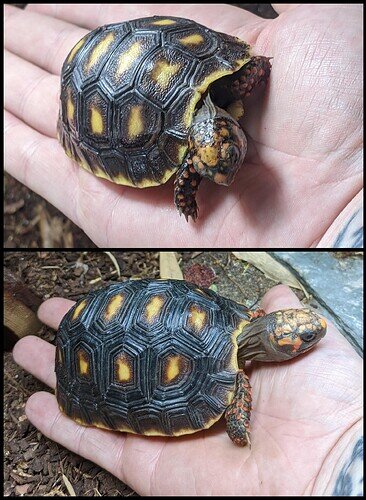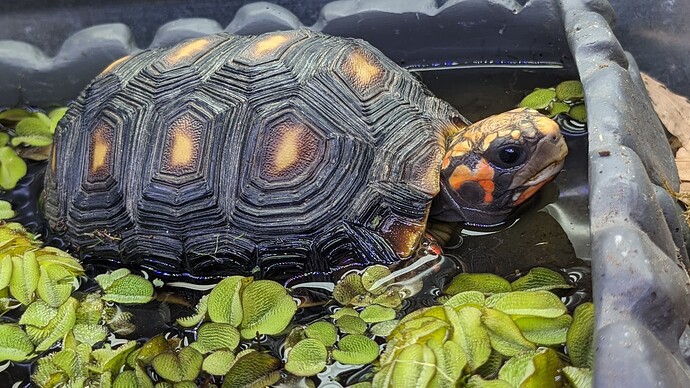Although I won’t call it finished, I do have a version of the wiki I’ve been working on here regarding Red Foot/Red Footed Tortoises I believe I’ll deem complete. Any information anyone might have that’s better based on experience, please feel free to chime in, or add to this, as the majority of this so far is a collective of mostly external research and minor experience.
Just an update on Atlas, and the enclosure, and also many updates to the wiki since. I’ve been working on some plant-life, mostly to help with keeping proper humidity at her level without oversaturation of the substrate, and cover. I reworked a couple of her hides and haven’t changed the configuration much since, aside from the slow addition of the plants. Her diet is a wide variety of greens (kale, spinach, romaine, cactus, etc), fruits (strawberry, blueberry, pineapple, watermelon, honeydew, apple, mango, etc) and vegetables (zucchini, cucumber, flower petals, etc), and tends to like Mazuri Small Tortoise LS (the Small Tortoise part is important especially, if you decide to try this out for a young Red Foot or similar, the pieces are an excellent size for hatchlings and on) and since she has UVB exposure available, likes to come out in the sunlight when it crosses over her during the day (and open a door to allow her the light) and chews on her cuttlebone pretty regularly, only has her food lightly dusted with zero D3 calcium supplement, per her UVB exposure and calcium intake, and eats great, although tends to favor her greens.
Is that a mint (catnip?) in the second to last pic? I love that stuff. Heck, even I will chew a few when gardening…
Your info is awesome, thanks for the hard work!
Thank you, @dlhirst. That is Pilea mollis, otherwise known as Moon Valley, which is safe for the tortoises and provides a little bit of cover.
Thats amazing! Well done.

